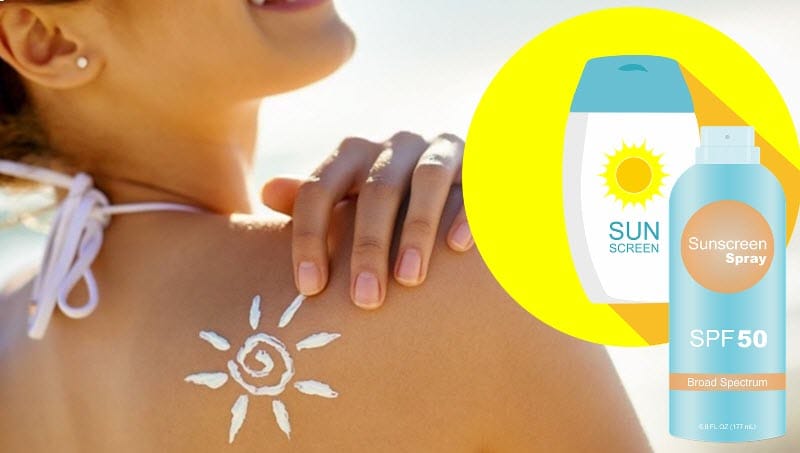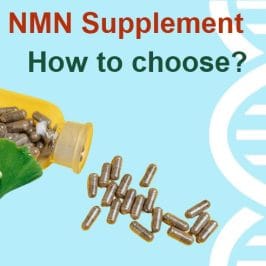In addition to light and heat, the sun also releases ultraviolet radiation that is invisible to the human eye. They can harm the skin and provoke the appearance of age spots, burns, and redness. It is ultraviolet radiation that is one of the most important factors in premature aging, melanoma, and skin cancer. To avoid problems, it is important to choose the right sunscreen that is suitable for your skin type, and age and will reliably protect the skin from solar radiation. How not to make a mistake in choosing?
How Does a Tan Appear?
Sunburn is our body’s defense mechanism. Under the influence of ultraviolet radiation, the body secretes the pigment melanin. It also gives the skin a swarthy look. With a small release of melanin and excessive exposure to ultraviolet radiation, skin cells become more vulnerable. They recover worse, die, or turn into cancerous ones.
How to Prepare Your Skin for the Sun?
Do not rely on cream alone. It is essential to moisturize the skin, as it tans more evenly. Also, due to hydration, the skin tolerates temperature changes more efficiently and is more resistant to solar radiation. It is worth paying attention to the diet. Dermatologists recommend adding foods rich in carotenoids: tomatoes, carrots, peppers, cherries, oranges, and peaches. Carotenoids help soften, reduce dryness, and prevent aging and inflammation.
The Main Criteria When Choosing a Sunscreen
To avoid all the negative consequences, you need to select a sunscreen individually. It is important to pay attention to the composition and SPF factor of the product. Consider your skin type (dry, prone to allergies and irritations, oily or sensitive). Also, pay attention to the UV radiation in the region you are in.
To get the right protection from the sunscreen you want to use, first check what the product label says:
- Broad spectrum, which means that sunscreen protects against UVB rays that cause sunburn and UVA rays that age the skin and can cause skin cancer.
- SPF 30 or higher. The American Academy of Dermatology Association advises using sunscreen with an SPF of at least 30 despite the FDA’s minimal guideline of SPF 15 for protection against skin cancer and sunburn.
- The phrase “Skin Cancer/Skin Aging” on the drug label indicates that sunscreen will only prevent sunburn and won’t lower the risk of developing skin cancer or premature aging of the skin.
- Water-resistant. Although you won’t be swimming, a water-resistant sunscreen will remain on longer while you perspire.
What is SPF?
The abbreviation SPF (Sun Protection Factor) is an indicator by which you determine the degree of protection against the negative effects of UV radiation from the sun. The number next to the SPF indicates how much UVB rays still hit the skin. With the correct use of sunscreen with a maximum factor – SPF 50 – 1/50 of UVB radiation enters the skin. SPF does not measure the time you can spend under the sun, as many people think.
Usually, experts advise using a cream with SPF 30 every day. SPF 30 means sunscreen gives you 30x protection. This means that it takes 30 times more sunlight to get a sunburn.
Consider Your Phototype
Determine your phototype before you begin choosing. It depends on how well the skin naturally protects itself, or how much melanin is created in the skin when exposed to sunlight.
There are a total of six prototypes. The probability of a burn is increased the lighter the skin is because its own defensive system is weaker.
The first three phototypes are white-skinned, which means they are practically defenseless. For them, funds with the highest possible SPF 50+ are needed. Representatives of phototypes 4, 5, and 6 require SFP 20 and 30.
Even people with dark skin who tan well still need to use sunscreen since UVA radiation can cause wrinkles and pigmentation and is harmful to the skin in general.
Skin Type
Consider your skin type and characteristics. Modern sunscreen formulas have been developed to also perform care functions. We suggest following the recommendations that will help you choose a sunscreen for your skin type:
- Sensitive skin. For owners of a sensitive type, it is best to choose a cream containing mineral filters. Avoid creams with paraben or oxybenzone, artificial fragrances, colors, and soothing agents such as niacinamide or Centella Asiatica extract. You can also consider popular pharmacy brands.
- Oily and problematic skin. In order not to provoke the appearance of inflammation on oily and problematic skin, choose products with mineral components without oils and silicones in the composition. Additionally, search for sunscreens with non-comedogenic claims. So they won’t block your pores and result in acne of any kind.
- Dry skin. For dry skin, it makes sense to choose products with moisturizing ingredients – hyaluronic acid, glycerin, aloe, oils, and so on.
- Aging skin or prone to pigmentation. For this type of skin, powerful protection is best, so a sunscreen with a value of at least -50 is needed. In addition, it will be ideal if the product has an anti-aging effect.
Why are UVA and UVB Radiation Dangerous?
UVA rays make up the majority of ultraviolet radiation and are among the most dangerous. They start the process of destruction of collagen and elastin, damage the cells of the dermis, and blood vessels, provoke malignant neoplasms, and contribute to photoaging and pigmentation. These rays penetrate clouds and window panes and affect our skin all year round. Therefore, they are dangerous in any season, and not just in hot and sunny summers.
UVB rays make up a small fraction of ultraviolet, as most of them are stopped by clouds and glass. But when they penetrate the barriers, our skin tans and gets sunburned. This provokes an allergic reaction and can develop cancer cells.
Keep in mind, that sunscreen does not stop the process of getting vitamin D in the sun.
Sunscreen Types and How They Work
Sunscreens are classified into two types: physical and chemical.
Physical Sunscreens
Physical sunscreens contain active mineral ingredients such as zinc oxide or titanium dioxide, which remain on the skin’s surface and deflect harmful UV radiation. This sunscreen shields your skin from both UV A and UV B radiation. They also offer instant sun protection after application. Natural or mineral-based sunscreens are other names for physical sunscreens.
Because they do not clog your pores, physical sunscreens are widely utilized. They may, however, leave a thin coating on your skin, feel heavy, and sweat away readily. As a result, you may need to reapply sunscreen regularly.
Most skin specialists and doctors suggest physical sunscreens over chemical sunscreens because they are photostable and can block a wide variety of UV wavelengths. Photostability is the inherent quality of an active component that prevents it from changing or degrading in the presence of sunshine.
Physical sunscreens that are lightweight, non-chalky, and easy to apply are manufactured by a number of commercial brands.
Chemical Sunscreens
Chemical sunscreens contain organic components (of carbon origin) that cause a chemical reaction on the skin’s surface. UV rays are transformed into heat in this process, which is then expelled from your skin.
These sunscreens are thinner in comparison to physical sunscreens. As a result, they distribute and absorb more quickly on your skin, making them a popular everyday pick. Furthermore, only a small amount is necessary to protect your skin. They might also contain skin-friendly substances like enzymes and peptides.
What Exactly Is Broad Spectrum Sunscreen?
Broad-spectrum sunscreen not only blocks UVB rays, which cause sunburn and subsequent damage to the DNA of our skin cells, but also UVA rays, which accelerate the aging process. The risk of some malignancies and early indications of aging can be reduced by using sunscreen on a regular basis and according to instructions. Choose a sunscreen with a larger spectrum, as indicated on the container, to ensure that you are protected from UVA and UVB radiation.
Even products branded “broad-spectrum UVA/UVB protection” did not always offer enough UV protection. Titanium dioxide is probably effective, although it does not cover the entire UVA range. Zinc oxide outperforms titanium dioxide in studies conducted in the early 2000s.
Water-resistance
Choose water-resistant options that last up to 40 minutes in the water, even if you’re not going to swim. Or very water-resistant ones that are effective for up to 80 minutes in water. This indicates that the sunscreen provides protection for the time indicated on the label, even while swimming or sweating.
How to Apply Sunscreen
A few rules that are important to follow:
Protect yourself from the sun at any time of the year, even in cloudy weather, when it seems that there is no sun.
- Apply sunscreen 20-30 minutes before going outside to allow it to absorb and form a protective barrier.
- Repeat the procedure every 2 hours and apply the product evenly in sufficient quantity to all areas of the skin.
- After bathing or interacting with water, you need to renew the cream, especially if it is with a physical filter.
- Apply the cream in a thick layer, so it will work better and longer.
Conclusion
Sunscreens allow you to get the benefits of sun exposure without harming the epidermis. You can choose the optimal composition based on skin type, level of protection, and composition.
To contribute to the effectiveness of the chosen product will help comply with the rules of exposure to the sun, excluding visiting the beach during a period of high activity of ultraviolet rays, as well as observing a reasonable time limit.
According to the recommendations of the World Health Organization, you can sunbathe in the morning and evening hours. And at lunchtime, when the sun is most aggressive, cover yourself from it with clothes or stay indoors.








Leave a Reply